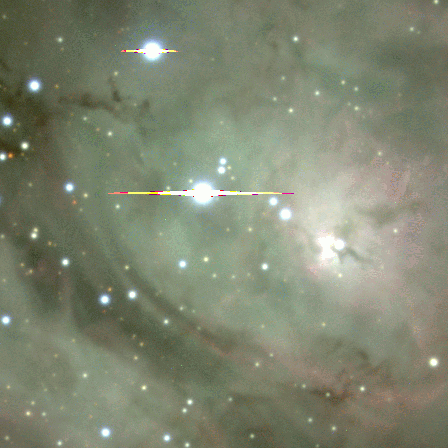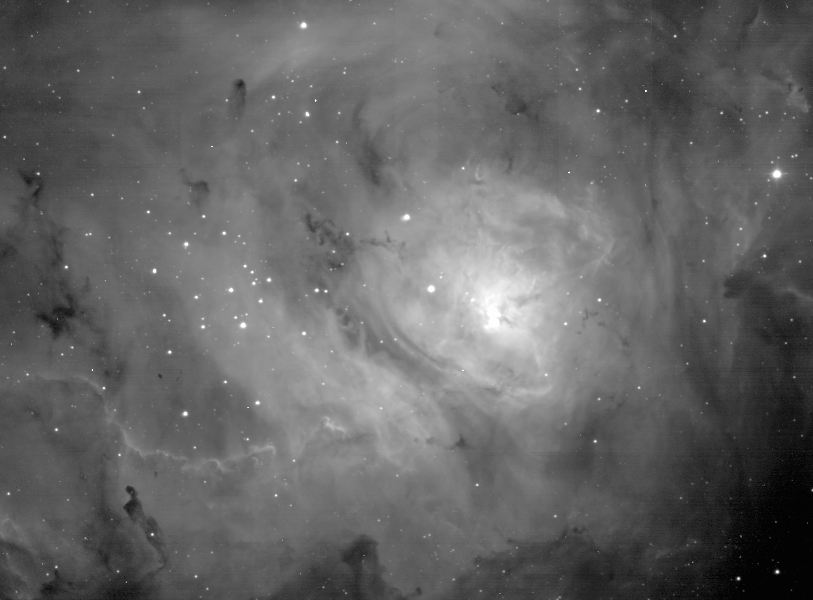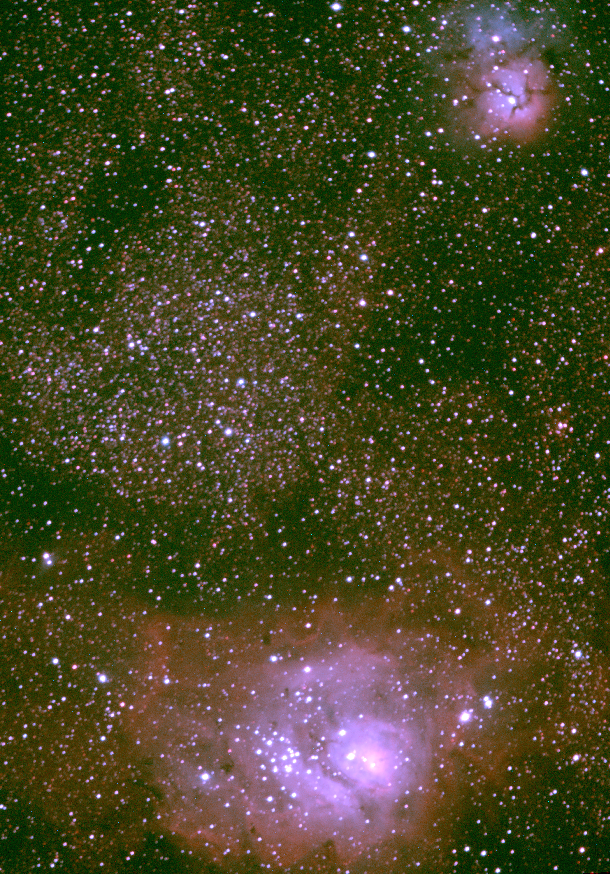

This color-composite image shows the inner part of the Lagoon Nebula M8 (NGC 6523) in Sagittarius, including the central Hourglass structure. This is a gaseous nebula which shines by reradiating energy absorbed as far-ultraviolet ionizing radiation from the cemtral hot stars (known as an H II region ). This image is from BVR data obtained by Bill Keel and Lisa Frattare with the 2.1m telescope of Kitt Peak National Observatory. The field is 9.3 arcminutes across. The above image is 1/4 of original size; click for one averaged only 2x2 from the original 2048x2048 format. The intensity scale is logarithmic to show detail acros sthe wide brightness range of the nebula. The brightest stars saturated the CCD pixels, giving rise to the unsightly charge-bleeding tails from them. The color image shows how the relative roles of reflection and emission lines, and various emission lines from hydrogen, oxygen, and nitrogen, change from place to place in the nebula.
Further intricate detail is seen in the monochrome H-alpha image below. This is an 8-part mosaic produced with the 0.6-meter SARA telescope at Cerro Tololo, Chile.

Wider perspective is seen in this image from g and r filters made with the UA Crimson Dragon wide-field system deployed to Kitt Peak. This view runs from the Lagoon Nebula at the bottom to the Trifid Nebula at the top edge, and the intricate dust lanes throughout this area of sky.

HST images have revealed fascinating details of the gas and dust interacting with the young stars in the Lagoon. The resolution of HST puts a whole new face on the structure of the Hourglass.
Last changes: 9/2018 © 2001-18